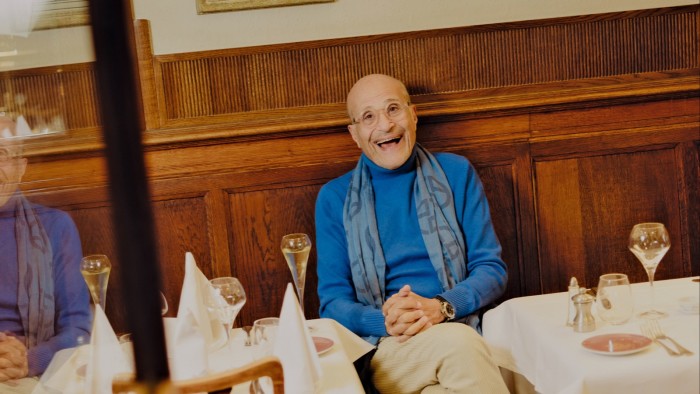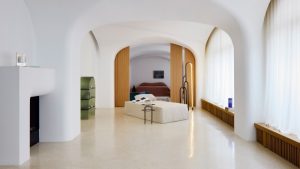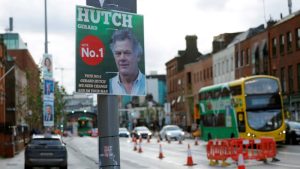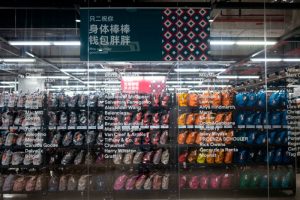Jean Boghossian’s insider guide to Brussels

Unlock the Editor’s Digest for free
Roula Khalaf, Editor of the FT, selects her favourite stories in this weekly newsletter.
I was born in Aleppo, Syria, but grew up in Lebanon. The first time I came to Brussels was in 1970, when I was 20 years old. I was en route to Antwerp to learn about the diamond business – I come from a family of jewellers – and I spent the next few years travelling the world in search of precious stones. When I returned to Brussels in 1975, I was escaping the civil war in Beirut: people were shooting each other without knowing why and I didn’t want to die by a stray bullet. That same year, I met my wife and opened the first Boghossian office in Europe. I am now a resident of Monaco, but for a long time Brussels was home.

Brussels is the heart of the European Union. It’s an important city – both politically and culturally – with a criss-cross of different nationalities. It’s not as big as Paris or London, but it still has charm. It was here that I first discovered what art can bring to life: as a jeweller, I had learnt to draw, but in the Moyen-Orient mentality, a businessman does not paint. It is something I started doing gradually. By day I worked with diamonds; at night I attended classes run by a local artist. When my son was nine, I bought him a set of art tools for Christmas but he never touched them. In the end, it became his present to me.


One of the great things about Brussels is its many subsidies for the arts through the Arts Decree and the Mondriaan Fund. In the ’90s, I enrolled at the Royal Academy of Fine Arts, beginning my journey into abstraction and my work with smoke and fire, for which I am best known today. At the time, I paid €100 a year thanks to the Wallonia-Brussels Federation subsidiary, but it was an education worth millions. By 2015 I was committed to my art full time, exhibiting frequently at the Black Box gallery on Rue Haute and the now-closed Galerie Guy Ledune.
We have many museums in Brussels but there are three big, important ones: the Royal Museums of Fine Arts, which show western art from the 15th to the 21st century; Wiels, a collection of mostly modern and contemporary works; and Bozar, a magnificent art deco building designed by Victor Horta in the city’s Royal Quarter.

Brussels is the birthplace of Belgian surrealism, and Bozar recently celebrated 100 years since the movement began with an exhibition of works by Delvaux, Dalí, Magritte and Jane Graverol. I also can’t forget the Wittockiana, a book arts and bookbinding museum with more than 3,000 books on display. I exhibited a selection of rescued books in the space in 2013, and was recently invited back to present a selection of new works on paper, wood and canvas.


EATING & DRINKING
Al Piccolo Mondo alpiccolomondo.be
Aux Armes de Bruxelles auxarmesdebruxelles.com
Bocconi at Hotel Amigo roccofortehotels.com
Chez Léon chezleon.be
SHOPPING
Schleiper schleiper.com
CULTURE
Black Box Rue Haute 243, Brussels 1000
Bozar bozar.be
Fondation Boghossian villaempain.com
Royal Museums of Fine Arts of Belgium fine-arts-museum.be
Wiels wiels.org
Wittockiana wittockiana.org
WHERE TO STAY
Hotel Amigo roccofortehotels.com
Odette en Ville odetteenville.be
Steigenberger Icon Wiltcher’s hrewards.com
Some of my paintings have also just been installed on the walls at the Steigenberger Icon Wiltcher’s on Avenue Louise, which is a lovely place to stay: I’m a real hotel guy. I would also recommend Odette en Ville – a more boutique-style hotel in a private residence from the 1920s – or Hotel Amigo next to the Grand-Place. Often described as the most beautiful town square in Europe, it’s surrounded by stone buildings from the 17th century, and there are plenty of fantastic restaurants nearby too.
For classic Belgian food – moules-frites – head to Chez Léon or Aux Armes de Bruxelles on the Rue des Bouchers. I also love the Italian food here. Hotel Amigo has a top Italian restaurant called Bocconi: I order the pumpkin risotto with truffle. Elsewhere, Al Piccolo Mondo is a family-owned spot that serves some of the best Italian wines such as Primitivo and Amarone. I don’t drink beer.
Inspiration is everywhere, so I always carry a sketchbook with me. Schleiper is one of the biggest providers of art supplies, and a place where you can stroll around and choose pigments, oils and brushes that you can’t easily find anywhere else.

Most of my days are spent in my studio in Uccle, which borders the city, or at Villa Empain, where the Boghossian Foundation has its headquarters. My family and I bought the building in 2006 and have since transformed it into an art centre that is committed to opening dialogues between the east and west. Yes, I’m an optimist. But it is my belief that art is the only language you don’t need to fight over. If you disagree, at least you can have a good meal afterwards. Pasta or moules?
#Jean #Boghossians #insider #guide #Brussels







